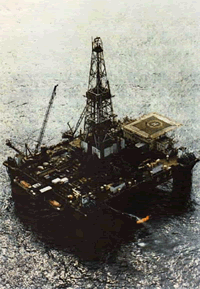Atmospheric corrosion of metals occur by water adhering on surfaces and oxygen in the air. A marked difference of atmospheric corrosion from underwater corrosions is that supply of water is limited in relation to the abundance of oxygen. The water is supplied onto metal surfaces through rainfall and condensations of water vapor in the air.
The condensation is not often visible to naked eyes but is quite responsible for the progress of corrosions. Rainfalls occur outdoors but the indoor corrosions are mostly due to water vapor condensations.
Moisture in the air is normally represented in Relative Humidity term. This is defined as: Percentage of moisture content in the air against a saturated water vapor content as 100% at a "given temperature".
Therefore, there should be no condensation on surfaces unless the relative humidity becomes 100%, theoretically. Condensation would occur if the temperature drops while the relative humidity is at a certain level since the vapor saturation limit would also drop. However, condensations actually occur even if the temperature does not drop for the following two reasons.
| (1) | Due to minute clearances and capillaries created by dusts and particles adhering on metal surfaces. The definition of 100% Relative Humidity is based on an assumption of water being supplied by a flat water surface. If the surface is indented, the surface can only give lower concentration of water. In a macro view, such surface would saturate at lower vapor concentrations and result in condensations. The interface regions of metal surfaces and dusts are the equivalent of these indentations, and porous entities such as dusts and rust particles have capillaries. Rust occurring on dust adhering areas of polished steel is due to this reason. |
| (2) | The other reason for the condensation is the surface deposited salts. Like the moisture caked cooking salt, salts have affinity to water. There are, however, minimum humidity conditions for the water affinity of salts. Cooking salt requires the minimum humidity of 78%, and 35% for calcium chloride commonly used as desiccants. Corrosion would occur if air exists around a steel plate with water content on its surface. Additionally, the corrosion will be further accelerated if sulfur dioxide gas (converts into sulfuric acid) or salts from ocean water exist in the atmosphere. Rainfalls generally promote the corrosions, but on the other hand, they also wash away sulfuric acid and salts from the metals, inhibiting the corrosions. In some severely corrosive environments near sea shores, there are instances where corrosions are much worse on the front side of steel plates than the back sides. |

